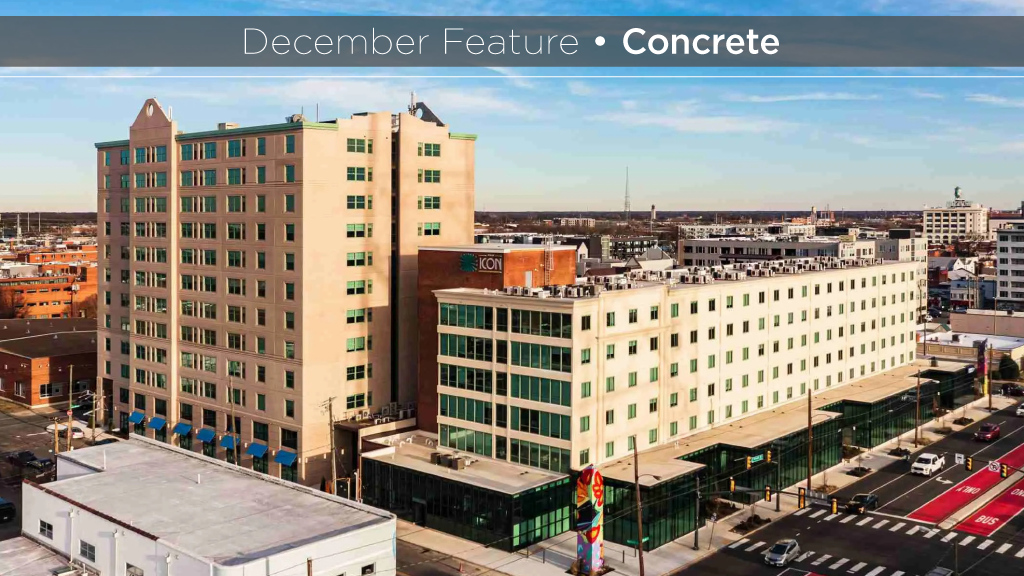The demand for precast concrete components continues to develop across more construction sectors around the world.
In the U.S. alone, revenue for precast producers was more than $25 billion in 2022, spread across nearly 3,000 plants, according to data from the National Precast Concrete Association. That follows a five-year average growth of 6.9 per cent. The U.S. market is expected to reach nearly $55 billion over the next four years.
Globally, the future looks as bright. A compound annual growth rate (CAGR) of 6.6 per cent has been projected over the same four year period, reaching just under $200 billion by 2027.
Precast offers attractive advantages in today’s world of environmental concerns and cost constraints.
Reusable steel or wooden moulds used in manufacturing facilities means controlled production, which is faster, safer and more consistent than site-cast concrete.
Precast components come in shapes and profiles beyond simple beams, including double tees, spandrels, flat slabs and inverted tee beams, to list only a few.
The flexibility to use these in almost any combination of colour or texture allows precast to find purpose in almost every construction project imaginable. Many structural precast components can be left exposed without plastering due to their smooth finish.
The most popular use of precast continues to be for infrastructure not always visible to the eye. In the U.S., the precast industry is led by sanitary and storm water products, representing nearly one-third of all precast concrete production.
Going forward, however, precast concrete girders for bridges and highways are forecast to enjoy the highest CAGR over the next four years, due to the benefits of rapid construction, minimal traffic disruption and less environmental impact. Precast concrete is particularly well-suited in applications where the construction materials are subjected to heavy loads.
The uniformity of precast concrete components is essential for large-scale construction projects requiring precision and accuracy.
They can be customized to meet the specific requirements of all types of industrial projects, anything from warehouses and manufacturing facilities to power plants and refineries.
Precast is also used in large-scale projects like concert halls, arenas, airports, educational institutions and hospitals.
In fact, with global growth and urbanization projected to continue, market demand for precast concrete will increase.
As Modern Methods of Construction become more common throughout the industry, applications for precast concrete are likely to grow beyond infrastructure and commercial to include residential projects. Insulated concrete panels, columns, beams, floors, roofs, walls, pipes, staircases, and even complete volumetric modular units made from precast, result in cost-effective and efficient construction practices beyond just infrastructure.
Faster building processes mean more precise scheduling. Projects can be completed on time and within budget. That reduces labour costs, increases efficiency and leads to overall savings.
An example of precast concrete’s potential in new areas of construction is the Icon Apartments in Richmond, Va., the first total precast project of its kind in the United States.
Precast component manufacturer Tindall Corporation developed nearly 700 precast elements for this 12-storey, 189-unit luxury apartment development, all erected quickly with a single crane and a small onsite crew.
These included load- bearing architectural wall panels, stair and elevator towers, and the company’s proprietary lightweight all-purpose T-SLAB floor system which allowed the concealment of the building’s MEP elements.
Together, these accelerated the construction process, allowing the Icon Apartments to be fully erected in less than 16 weeks.
Across all project types, the increased use of pre-stressed concrete floor systems offers more flexibility in architectural design.
In addition to conventional steel reinforcing, steel strands manufactured from high-strength steel are pulled up to approximately 40,000 pounds per strand before the concrete is poured.
After the concrete ach-ieves an acceptable strength of approximately half the final design strength, these strands are then cut.
That transfers the pre-stress compressive force into the concrete.
The precast piece is then removed from its form. Pre-stressing strengthens the component, improves performance and allows for shallower members with longer spans.
One issue that could positively impact the future of precast concrete is the potential to reuse components after the end of a building or structure’s useful life.
Observers note cast-in-place concrete is monolithic and not easily recyclable. Reuse is rarely considered.
At best, some concrete is ground up and used as an aggregate or fill elsewhere, resulting in high levels of energy and carbon emissions.
Is there not an opportunity, they ask, for precast concrete components to be separated or cut out in their entirely and find purpose in a future project, much the way steel is reused?
It might appear that precast components could answer that call, particularly if future structures are designed with reuse in mind.
The prospects for precast circularity could open new levels of possibilities.



Recent Comments